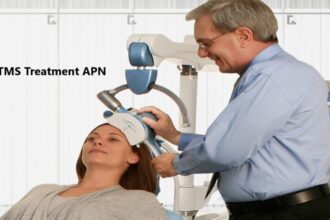When it comes to our health, understanding the various conditions that can affect us is crucial. One such condition that often goes unnoticed but impacts many lives is attrities. Have you ever experienced joint pain or stiffness? You might be more familiar with attrities than you realize. This blog post dives deep into everything about attrities—its history, types, causes, symptoms, and treatment options. Whether you’re seeking knowledge for yourself or a loved one, you’ll find valuable insights here. Let’s unravel the mysteries of this common yet misunderstood condition together!
What are Attrities?
Attrities, often referred to in the context of joint disorders, encompass a range of conditions characterized by inflammation and degeneration of joints. This term is commonly associated with arthritis but can extend to various related ailments.
The primary hallmark of att rities is discomfort, which can fluctuate from mild annoyance to debilitating pain. It affects mobility and overall quality of life.
While people frequently associate it with aging, attrities can impact individuals at any stage. Genetics, lifestyle choices, and environmental factors play significant roles in its onset.
Understanding what att rities entail helps create awareness about the importance of early diagnosis and management strategies. These steps are crucial for maintaining an active lifestyle despite this challenging condition.
The History of Attrities
The history of attrities stretches back centuries, though it has often been shrouded in mystery. Ancient civilizations recognized the ailment, referring to various forms of joint pain and inflammation. They used herbal remedies and physical therapies to alleviate symptoms.
In the 19th century, medical advancements led to a deeper understanding of joint diseases. Doctors began categorizing types of attrities based on their causes and characteristics. The introduction of microscopy revealed insights into synovial fluid changes, allowing for improved diagnoses.
By the mid-20th century, research intensified. Scientists identified autoimmune components linked to certain forms like rheumatoid att rities. This newfound knowledge paved the way for innovative treatments that transformed patient care.
Today, we continue exploring this complex condition through ongoing research and development. Each discovery adds another layer to our understanding of how attrities impacts millions worldwide.
Types of Attrities
Attrities come in various forms, each presenting unique challenges. The most common type is osteoarthritis, which results from wear and tear on the joints over time. This often affects older adults as cartilage breaks down.
Rheumatoid arthritis is another prevalent form. It’s an autoimmune condition where the body mistakenly attacks joint tissues, leading to inflammation and pain.
Psoriatic arthritis can occur in people with psoriasis, causing both skin symptoms and joint discomfort. Meanwhile, juvenile idiopathic arthritis impacts children differently than adults.
Gout stands out due to its association with uric acid buildup, causing sudden flare-ups of intense pain. Infectious arthritis arises from bacterial or viral infections affecting the joints.
Understanding these variations aids in appropriate diagnosis and treatment options tailored to each specific type of att rities.
Causes and Symptoms of Attrities
Attrities can stem from various causes. Genetic predisposition often plays a significant role. If your family has a history of joint issues, you might be at higher risk.
Age is another contributing factor. As we get older, our joints undergo wear and tear. This natural aging process can lead to attritive conditions.
Injury is also a common trigger. Previous trauma to the joints may result in long-term complications that manifest as att rities later on.
Symptoms vary widely among individuals but often include persistent pain and swelling around the affected areas. You might notice stiffness, especially after periods of inactivity.
Limited range of motion can become apparent over time too. Simple tasks like walking or climbing stairs may feel increasingly challenging as symptoms progress.
Listening to your body is crucial; early detection improves outcomes significantly when addressing these concerns.
Treatment Options for Attrities
Treatment options for attrities vary depending on severity and individual needs. Non-steroidal anti-inflammatory drugs (NSAIDs) are commonly used to alleviate pain and reduce inflammation. They provide quick relief for many patients.
Physical therapy plays a crucial role in managing symptoms. Tailored exercises strengthen muscles around the affected joints, improving flexibility and mobility.
For more severe cases, corticosteroid injections may be suggested to target specific areas of discomfort directly. This can lead to significant improvements in movement.
In some situations, surgical interventions become necessary when conservative treatments fail. Procedures like arthroscopy or joint replacement offer hope for those with advanced stages of attrities.
Alternative therapies also attract interest among patients seeking holistic approaches. Acupuncture and massage therapy have shown promise in reducing pain and enhancing well-being, making them valuable additions to treatment plans.
Prevention and Management of Attrities
Preventing attrities starts with a proactive approach. Regular check-ups with healthcare professionals can help identify early signs. Staying informed about your health is key.
Maintaining a balanced diet rich in anti-inflammatory foods may also be beneficial. Incorporate plenty of fruits, vegetables, and omega-3 fatty acids into your meals. Hydration plays an essential role too; drink ample water throughout the day.
Physical activity should not be overlooked. Gentle exercises like swimming or yoga can enhance flexibility and strengthen muscles without putting undue stress on joints.
Managing stress levels is crucial as well. Mindfulness techniques such as meditation can reduce tension, which may alleviate symptoms associated with attrities.
Consider using assistive devices if daily activities become challenging. These tools can provide support and improve quality of life while allowing for greater independence in daily routines.
Conclusion
Understanding att rities is crucial for anyone affected by this condition. Awareness can lead to earlier diagnosis and better management strategies.
Living with attrities requires a proactive approach. Continuous education about symptoms, treatments, and lifestyle adaptations helps improve quality of life.
Community support plays a vital role in navigating the challenges that come with attrities. Connecting with others who share similar experiences can provide comfort and valuable insights.
Embracing healthy habits contributes significantly to managing this condition effectively. Simple lifestyle changes often yield significant benefits over time.
Staying informed empowers individuals to make choices that enhance their well-being while dealing with att rities. Each step taken toward understanding brings hope for better days ahead.
FAQs
Attrities can be a complex and challenging condition for many individuals. Understanding the various aspects, from symptoms to treatment options, is crucial for managing this disorder effectively.
Here are some frequently asked questions about att rities:
What exactly are attrities?
Attrities refer to inflammation of the joints that can lead to pain and stiffness. It encompasses a range of disorders affecting joint health.
What causes attrities?
The exact cause varies by type but often involves factors like genetics, age, infections, or autoimmune conditions where the body mistakenly attacks its own tissues.
How common are attrities?
Many people experience some form of atritic condition during their lives. It’s more prevalent in older adults but can affect anyone at any age.
Can lifestyle changes help manage att rities?
Yes! Maintaining a healthy weight, exercising regularly, and following a balanced diet rich in anti-inflammatory foods can significantly improve symptoms.
Are there specific treatments available for different types of attrities?
Absolutely. Treatments may include medications like NSAIDs or corticosteroids and physical therapy tailored to individual needs based on the type of atritic condition diagnosed.
Is it possible to prevent all forms of attrities?
While not all types are preventable due to genetic factors, adopting a healthy lifestyle can reduce your risk significantly.
If you have further questions or concerns about your health regarding attrites, consider consulting with healthcare professionals who specialize in this area. They will provide personalized advice tailored to your unique situation.

















